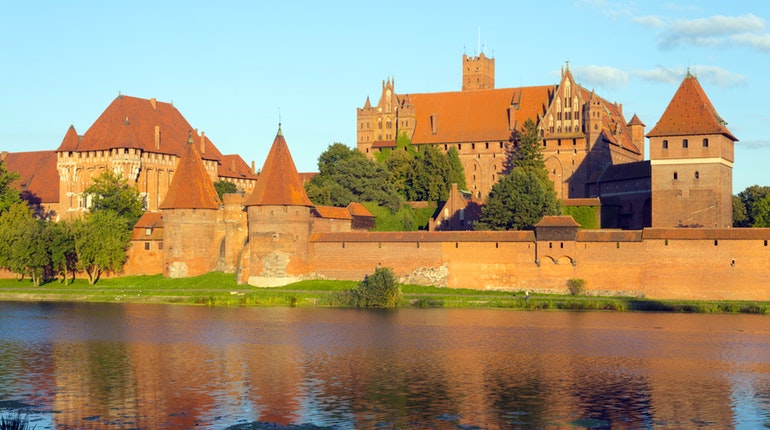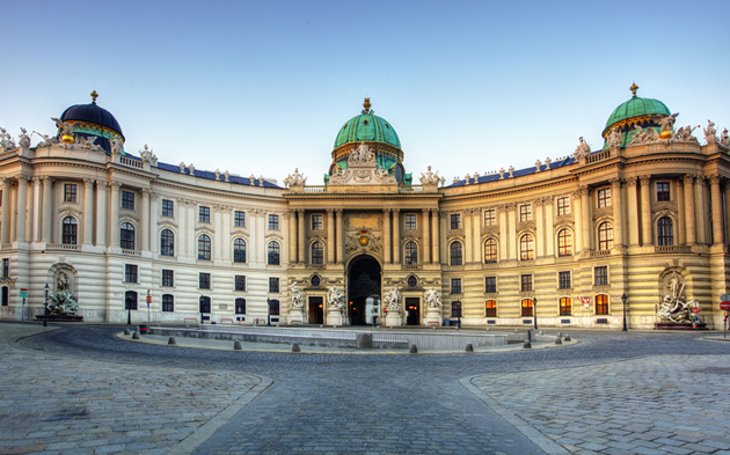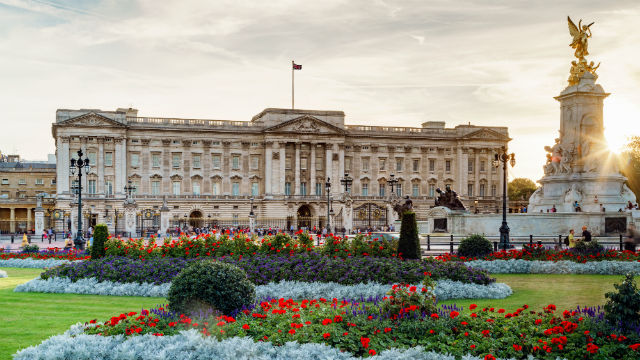Each and every emperor, king or dictator wants to show off their might and majesty with a palace that showcases the wealth and power they have at their disposal. This has led to some of the most beautiful and impressive feats of architecture ever seen on the planet, with these palaces being the epitome of regal building.
Navigate the article
#1 Royal Palace of Madrid
Built initially by Phillip II of Spain during what would later be regarded as Spain's 'golden age', the initial palace burnt down and was rebuilt by Philip V in 1755. Housing a rich history of monarchs and leaders, the palace acts as the official residence of the present-day Spanish monarchy, though the building is only used for state ceremonies these days. The palace has 135,000 square metres of floor space and contains a mammoth 3,418 rooms, making it the largest palace in Europe by floor area.
#2 Malbork Castle
With a history shrouded in the myths and legends of the famous Teutonic knights during the Crusades, the Malbork Castle has engraved itself into the deepest parts of European history. The largest brick building in the world, the castle has been recently renovated to bring back the allure it would have had back in the 1200s. With a long history of occupations and switching territories, Malbork was given back to the Polish people following the Soviet invasion of Poland in the Second World War.
#3 Forbidden City
Guarded from the outside world by a massive wall, the enclosed area inside covers 178 acres in the centre of Beijing making it the biggest palace complex anywhere in the world. Built to house the emperors of China between 1420 and 1912, it took over a million workers to construct the Forbidden City and houses some of the most precious ancient artefacts in the world. The Forbidden City has an extensive recent history of invasion with Anglo-French forces invading the palace in the Second Opium War, and the Japanese invading in 1933.
#4 Apostolic Palace
The central hub of worldwide Catholicism, the pope’s official residence covers 162,000 square metres in Vatican City. As well as the papal apartments the palace contains offices of the Holy See and Catholic Church, making it one of the most treasured buildings in the world for pilgrims and those seeking spiritual guidance. Housing the Vatican Museums and Library, the Apostolic Palace is home to one of the most impressive pieces of art in the world: the Sistine Chapel. It is also the sight in which cardinals convene to elect a new pope.
#5 Istana Nurul Iman
The seat of power for the Sultan and Government of Brunei, a small country located in the south-eastern corners of Asia, the Istana Nurul Iman has the bragging rights of being able to call itself the largest private residence in terms of floor area in the entire world. Costing roughly $1.5 billion to build, construction of the site was completed in 1984 to coincide with the country's full independence from the United Kingdom. Often at the centre of state occasions and royal hospitality, it is the symbol of the power and wealth at the end of the Sultan's fingertips.
#6 Ak Saray
Known as the 'Presidential Complex', this inclusion is the most recently built and arguably most controversial to feature on the list. Costing roughly $600 million to build, President Erdogan ordered the construction of the complex in the Ataturk Forest Farm, where it is supposedly illegal to build any structure of any kind. Seemingly ignoring the complaints and opposition of almost everyone in the country, the President continued on with the construction and it was completed in 2014. In the Turkish attempted coup of 2016, the Presidential Complex was fairly extensively bombed by opponents of the President.
#7 The Louvre
A renowned place of great beauty and a source of presumed envy from other European leaders across the continent, the Louvre Palace was the seat of French monarchistic power until the reign of the great King Charles XIV when he moved to Versailles. Covering 210,000 square metres, it is so big that the contemporary building is split into the 'old' and 'new' Louvre. It is now one of the most famous art galleries in the entire world, attracting millions of visitors every year.
#8 Hofburg Palace
The former hub of all imperial power coming out of the Austro-Hungarian empire ruled for hundreds of years by the Habsburg dynasty, the Hofburg Palace remains the workplace and residence of the President of Austria today. First built in 1279, the palace has seen multiple increases in its size and stature over the years, with its majesty scaling higher and higher with each passing alteration.
#9 Palace of the Parliament
The largest and most expensive civil administration building in the world covering 330,000 square metres, the Palace of the Parliament has thrust itself at the very centre of Romanian history since its construction in 1986. Built by the communist dictator of the country Nicolae Ceausescu and designed to be his official residence, the palace now exists as one of the central workplaces for the present Romanian government, though roughly 70% of the space inside the building remains largely empty and inactive.
#10 Rashtrapati Bhavan
Otherwise known as 'Presidential Residential' and formerly known as 'Viceroy's House' during the days of colonial India, the Rashtrapati Bhavan is the centre seat of the President of India, located in the capital city of New Delhi. 340 rooms strong, it is one of the largest residences for a head of state anywhere in the world, and is completed with 4,000 acres worth of land for bodyguards, staff and other offices to make their home in. The Bhavan is completed with some of the most stunning gardens found anywhere in the globe.
#11 Buckingham Palace
Easily one of the most famous and arguably iconic palaces in the world, Buckingham Palace is the central hub of the British monarchy and has come to be a cultural icon of Great Britain both inside the country and abroad. Built initially as a townhouse for the Duke of Buckingham in 1703, the building was quickly acquired by King George III and was subsequently greatly expanded upon right up until the present day. Despite not being one of the oldest palaces in the country, Buckingham has still enjoyed a long and rich history with a particular highlight being the bomb that landed on it by a German air raid in the Second World War.
This post was created with our nice and easy submission form. Create your post!












